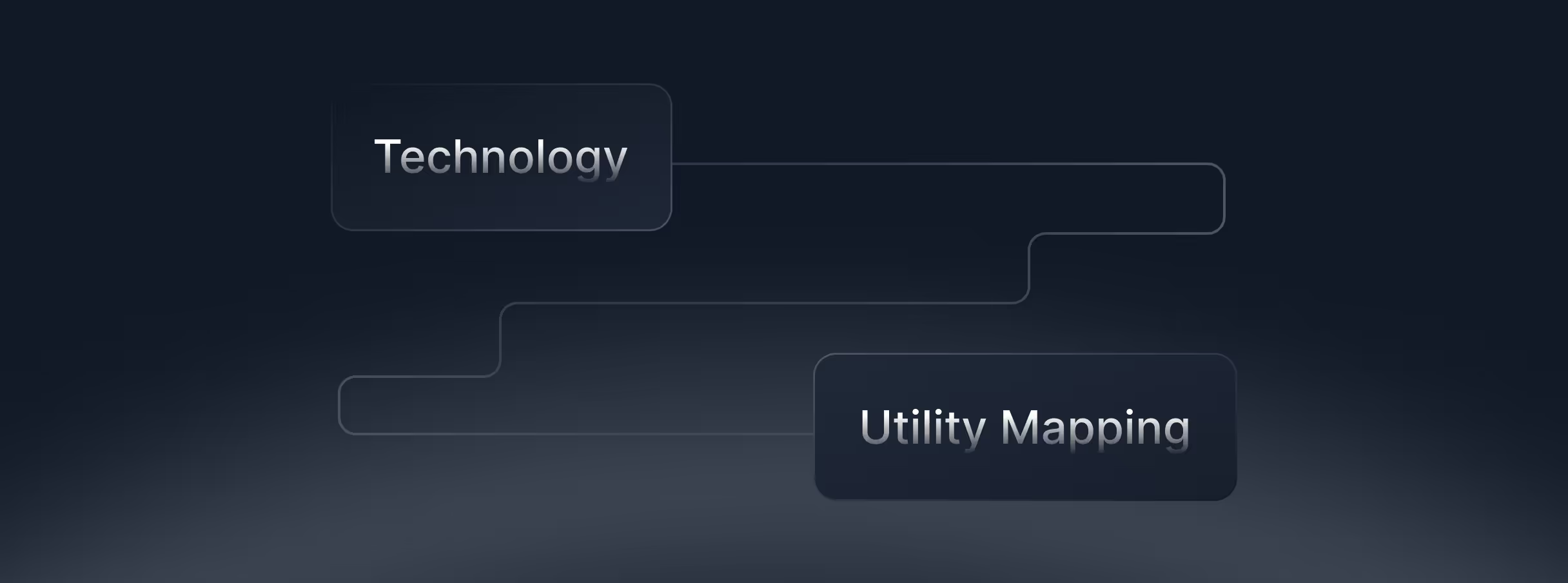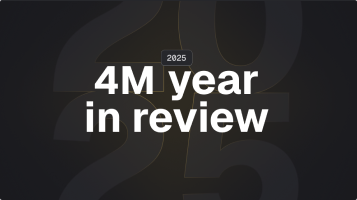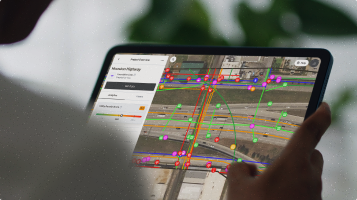How Technology is Revolutionizing Utility Mapping
Written by

Published on
October 20, 2023


Table of contents
TL;DR:
- Accurate utility mapping is crucial for construction projects to avoid accidents and ensure compliance with regulations.
- Reliable utility data is needed early in the planning stages to identify potential conflicts and make informed decisions.
- Obtaining reliable utility data is challenging due to a lack of comprehensive and up-to-date records.
- Utility data reliability depends on risk management decisions and requires a combination of expertise and advanced technology.
- 4M Analytics is revolutionizing digital utility mapping with our conflation engine, providing reliable, AI-driven, preliminary utility data in a few clicks.
Why Utility Mapping is Critical
Digging with confidence only happens when you know, with reasonable certainty, what’s under the surface.
For decades, construction professionals have faced consistent challenges around gathering reliable data about types of subsurface utilities and their locations. Today’s data- and AI-driven technologies provide new ways to investigate a project area before a shovel hits the ground.
In a recent webinar, Jim Anspach, P.G., Dist.M.ASCE, NAC, and John Campbell, Texas Branch Manager at T2 Utility Engineers, joined Raz Ezra of 4M Analytics to share their expertise on utility mapping as a tool to inform construction projects early in the planning stages.
Utility data: essential from beginning to end
Subsurface utility data is crucial for various stakeholders involved in construction projects, from engineers to architects, contractors, utility owners, and government agencies. Accurate utility data is essential for project planning, design, and construction, as it helps identify potential conflicts, avoid accidents, and ensure compliance with regulations.
Anyone who wants to dig safely needs utility data...And we need as much as we can get as early as possible. -John Campbell
Early access to reliable utility data allows project teams to identify potential conflicts and make informed decisions, saving time and resources. “We need that information before we make a decision that has some amount of risk baked into it,” says Anspach, “which means we need it all the time.”
How reliable does utility data need to be?
The amount and reliability of utility data required depends on the complexity and scale of the project. “How much we need and how reliable it must be depends on risk management decisions,” Anspach says. “What are we using the data for, and what are the consequences of using correct versus incorrect data? You have to determine how reliable it needs to be for this specific task, and then use all appropriate means to figure out where utilities are. When you need really good data, you might have to dig it up and look at it. In between, you’ve got utility and public records, geophysics, and common sense.”
He notes that each of these information sources and methods may have different degrees of accuracy. But less accurate information isn’t worthless. “I look at it like taking out binoculars and looking for something in the distance,” Anspach says. “It’s fuzzy at first, but you can turn the dial and gradually tune that in to gain a clearer picture. That’s very similar to what we want to do with a project limit. How refined do I need my data to be at this point in time?”
What are the challenges around obtaining reliable utility data?
One of the main challenges is the lack of comprehensive and up-to-date records. Utility infrastructure constantly changes, and outdated or incomplete records can lead to inaccuracies and potential conflicts. “It became clear to me early in my career that utility owners’ records are sometimes suspect,” Anspach says. “Sometimes they are great and easy to find, but in other cases, they are missing.” Even if records exist, manual research can be time-consuming and prone to human error — and the dynamic environment of subsurface utilities means records that were correct a few years ago might be outdated today.
How do you determine utility data reliability?
Utility data is rarely infallible, no matter the source. With project limits in mind, construction professionals must make a call on how certain they need to be about particular aspects of the utility data. “If you’re planning to add five new houses on a street and need more water line capacity, the answer of reliability might be do you know the size and condition of the existing pipe,” says Anspach. “In that case, the location doesn’t matter, but you want to be certain about the pipe’s capacity and status.”
Vetting the reliability of utility data requires a combination of expertise and advanced technology. Professional engineers analyze location data, cross-referencing it with visual observations and historical records and making a judgment call on its overall quality. “Traditionally, we collect all the applicable and available utility records — including as-builts, conduit maps, cable records, distribution maps, and field notes,” says Anspach. “Then, we take little bits and pieces of the different sources and make a professional judgment about what we think is going on with that particular utility structure.”
Where can you get utility information?
Utility information can be obtained from various sources, including utility owners, government agencies, and historical records — but it’s not a one-step process. “There’s no place you can go to get all those sources in one request,” says Anspach. “Normally, we call a One-Call/811 center, and they send a message out to utility owners, who give us what they feel like giving, if they feel like it at all because sometimes they’re not required to give us records.”
New technologies are simplifying the process of obtaining utility data. Just as the evolution from paper-based data gathering to computer tools cut down on time and effort needed in the field, so innovations like cloud-based data analytics and AI algorithms are speeding up formerly arduous processes. “The ability to pull information off PDFs, maps, and satellite images and conflate it lets you quickly get an idea of what’s out there,” says Anspach. “Then you can start to judge how certain or reliable it is.”
What is a conflation engine?
4M Analytics combines existing records, visual observations, and advanced algorithms to create a comprehensive and reliable dataset by synthesizing and analyzing data from different sources with a conflation engine.
This technology eliminates manual record research and allows for real-time updates.
“This data should be part of the opening process, used early in the lifecycle of a construction project,” says Raz Ezra, Senior Director of Partnerships & Enterprise Sales at 4M Analytics.
“As much as this data can be high confidence, you will still need to use professional engineers to verify it with field investigation and make a decision.” Ultimately, the conflation process optimizes early decision-making for project managers, engineers, architects, and other construction professionals.
For construction professionals up against deadlines and budget constraints, 4M Analytics’s conflation engine provides a clear solution. “Why wouldn’t you use a method that would give you the biggest bang for your buck right off the bat?” Anspach says.
“There’s nowhere to get that information unless you send out multiple people yourselves, pull things out of GIS databases, and search through old filing cabinets. Even if the data were only 70% complete and accurate, it’s a starting point — and the more we feed new information back into the system, the better the analysis will be in the future.”
4M Analytics: the Google Maps of the subsurface
Obtaining reliable utility data is crucial for the success and safety of construction projects. 4M Analytics is at the forefront of revolutionizing how utility data is obtained and utilized. We’re building the Google Maps of the subsurface, and we’ve mapped eight U.S. states so far. Leveraging advanced technologies, such as the conflation engine, we provide accurate and up-to-date utility information — helping construction professionals reduce risks, save time, and increase project efficiency.
Don't Let Outdated or Incomplete Utility Data Hinder Your Project's Success.
Recent blog posts

Our Newsletter
Join 7k infrastructure professionals
Get monthly insights on ways to build smarter, faster and safer with Utility AI.

.avif)




